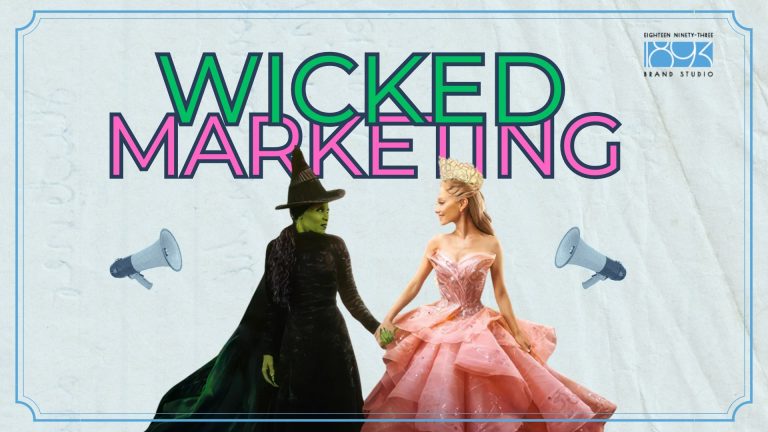Wickedly Good Marketing
by Annie Ascher

Illustration by Audrey Jones
If you didn’t see the promotional content for Universal Picture’s Wicked Movie, you might have been living under a rock. For the three months leading up to its release, it seemed like every other advertisement or promotion on Instagram, TikTok, YouTube, or even in stores was pink and green. In the final weeks before the premiere, there were more clips from red carpets and press tours than in the entire past year. In this blog, we will examine the pandemonium that surrounded the highly anticipated Wicked Movie. Was the marketing overwhelming or genius? From branding to media placement, what can aspiring marketers and advertisers learn from this campaign?
The distinct branding of this campaign, as well as all of the promotions and collaborations around it, made it instantly recognizable, much like the marketing for the Barbie Movie in 2023. People saw the two colors, pink and green, and immediately recognized them as part of Wicked‘s promotion. The film’s two stars, Ariana Grande (Glinda the Good Witch) and Cynthia Erivo (Elphaba, the Wicked Witch of the West), were constantly filmed and photographed together on press tours, award shows, movie premieres, and even at events like the Olympics, wearing outfits that paid homage to the movie and their respective characters. According to Forbes, “brand recognition can help bring in more sales and profits for a company, especially when it’s done right.”
Another notable piece of this campaign was the remarkable amount of media placement—and coverage—that went into it. From retail to out-of-home to social media, Wicked‘s marketing team tapped into everything. Even the CMO of Universal Pictures told The Wall Street Journal that the campaign for the movie was going to be “just short of obnoxious.” Being a movie musical, the film itself targeted several audience segments, including but not limited to musical theatre fans, fans of The Wizard of Oz, fans of Ariana Grande and Cynthia Erivo’s previous work, and more. This was evident in the fact that the marketing tactics did not seem to be targeted at any one specific audience but rather the general public.
However, some people started to feel suffocated by the sheer amount of marketing the studio pushed for this film. “Consumers are generally becoming more and more immune and less impacted by our traditional methods of communicating with them,” said Anjali Bal, a marketing professor at Babson College, in an interview with AdAge. She also mentioned how these tactics could lead to oversaturation, which could “have a long-term impact on brand collaborations and the success of film.” Nevertheless, the massive amount of exposure undoubtedly raised awareness and curiosity, ultimately getting people to the theater to see the film.
Regardless of whether people viewed the marketing as overwhelming or genius, the movie’s unique branding strategy and massive marketing effort undeniably made it as popular as possible.
